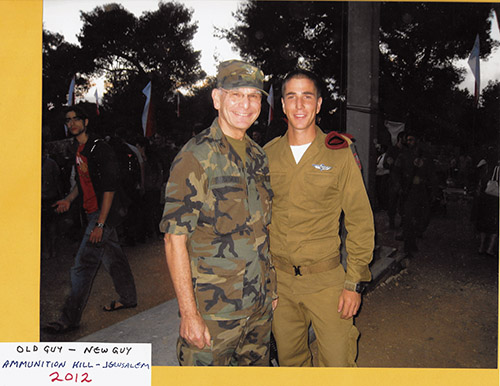
Fifty years ago this past summer, my life took a turn. Seven years of educational deferment from the Selective Service System was about to expire, and my draft status would be changing from II-S to I-A (eligible for induction).
Ours wasn’t a “military family,” but we had a tradition of answering the call. My father had registered for the draft on his 18th birthday, four days before the armistice ending World War I. Two of my older brothers interrupted promising careers in the 1950s for military service. Paul was drafted into the Army for two years, and Alan enlisted for four years in the Air Force. Thankfully, both served in peacetime.
By the summer of 1967, with the Tet Offensive still a few months off, war was clearly on the horizon in Vietnam. Some of my law school classmates were desperately searching for ways to avoid the draft after graduation—getting married and quickly having children, joining the Peace Corps or even teaching high school biology (it was rumored that Defense Secretary McNamara favored deferments for science teachers).
Law school had been a grind for me, and I was looking for a fresh start. I certainly wasn’t running from military service. But unlike my brothers, I wanted to earn a commission, despite the additional two-year obligation. My initial preference—the Navy—was not accepting line officer candidates who wore glasses. The Air Force had no such restriction for non-rated officer applicants. That’s how I ended up wearing blue instead of white.
On August 16 I took the oath of enlistment and headed off to San Antonio for Officer Training School. My greatest concern was keeping kosher through 12 grueling weeks. It would be tough, but I am living proof—it can be done!
The training program was actually quite impressive. Daily PT put me in the best shape of my life, and I was fascinated with drill. Most of the work was academic, and the courses were interesting and challenging. In just 12 weeks we absorbed the same curriculum that Academy or ROTC cadets were given over the course of four years. But this was expected of us because we were all college graduates. The coursework included studies in Air Force leadership and command, customs and ceremonies, military law and administration, military history and doctrine and strategic and tactical force capabilities of our and the other services (including our allies and adversaries)—in short, everything you needed to know to become a junior officer in the most powerful fighting force in the world.
My most vivid recollection is of those classes devoted to military history and doctrine. In a lecture hall filled with 600 officer trainees (less than 2 percent of whom were Jewish), our faculty made frequent reference to the recently concluded Six-Day War, expressing awe at what Israel’s air and ground forces had just accomplished in beating back and crushing the armies of its hostile, Soviet-armed neighbors bent on destruction of the 19-year-old Jewish State. These were among the proudest and most unforgettable moments of my 31-year USAF affiliation.
By Peter A. Berkowsky
Peter A. Berkowsky, Col, USAF (ret) lives in Livingston.










